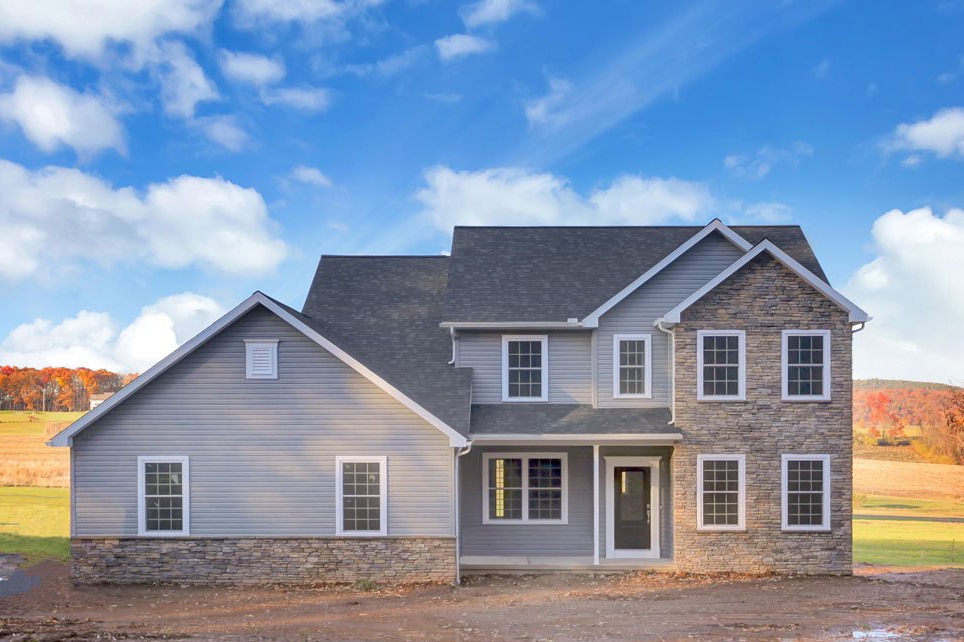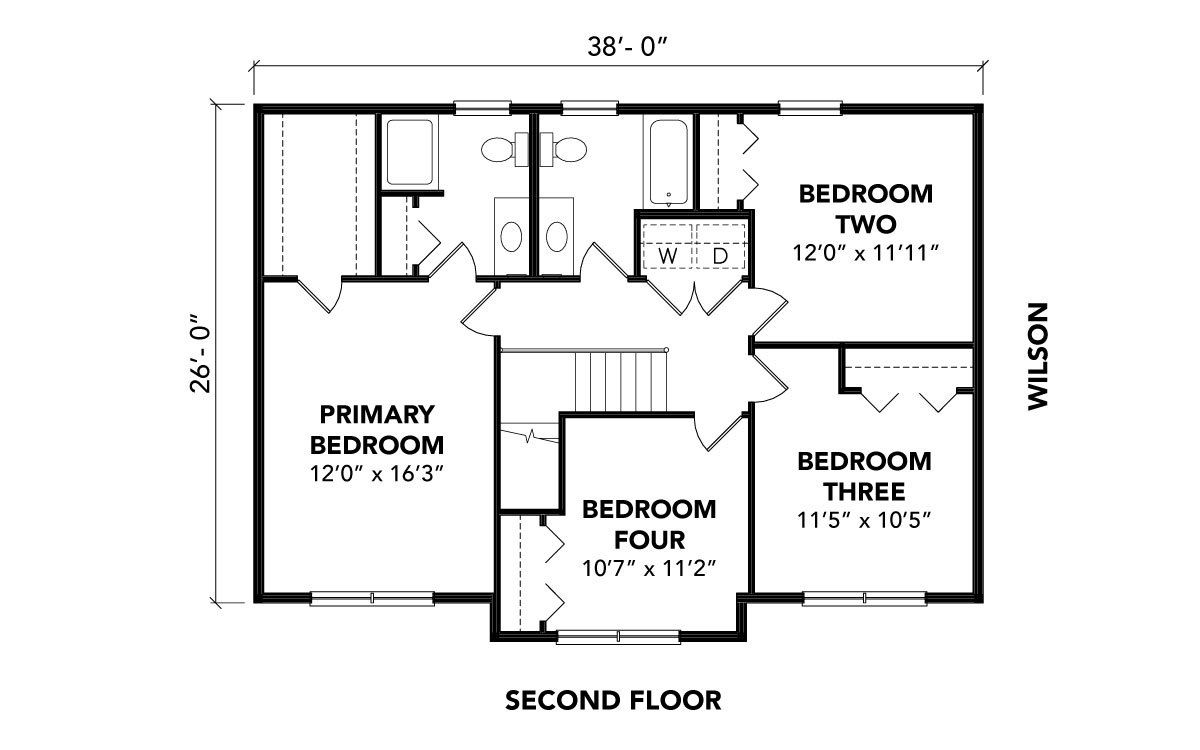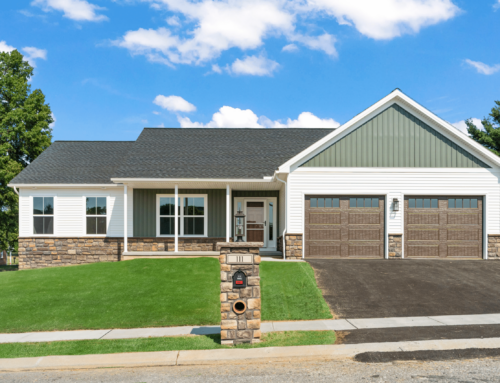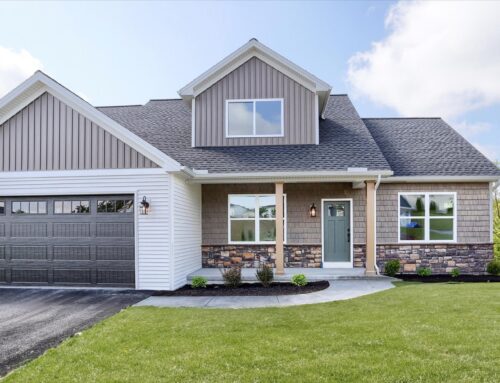Building a dream home on your own plot of land is truly a special moment in life. It’s a chance to create something that is 100% you from the ground up, literally! But it can also be overwhelming if you’re not sure where to start.
If you’re a homeowner in Central Pennsylvania, Southern New York, or the Winston-Salem/Triad area in North Carolina who is looking to build on your lot, our home building experts at Fine Line Homes made this guide just for you.
We’ll go over all the basics of building on your own land, from finding the right spot to break ground to getting all the permits and inspections you need.
Ready? Let’s go.
Why build a house on my lot? (Instead of purchasing a home elsewhere)
Should you buy an existing home or build one on your lot?
While some may feel buying a used home is more convenient and cost-savvy, here are some great reasons why some homeowners want to build on their own property:
- Lots of customization possibilities. In some communities, there may be HOA restrictions that limit minimum square footage, material requirements, and exterior colors. Typically when building a home on your own lot, you can personalize every detail to your liking. From the number of bedrooms and bathrooms, the size and shape of your home, the layout and finishes, only your imagination is your limit.
- It’s (probably) in a convenient location. Since you’re choosing to build on your lot, it’s safe to say you’re OK with the location and its surroundings. Whereas when buying an existing home, you may have to compromise on a less-than-ideal location.
- More energy-efficient. New homes are required to meet higher energy standards than most used homes. This means that your new home will be built with Green/Energy Star-rated appliances, more efficient toilets, plumbing fixtures, and electrical fixtures that allow a more sustainable home in the long run, saving you money on utility bills.
- Higher potential resale value for your home. If you’re ever planning to sell your home in the future, having built a brand new home should have a higher resale value than an older used one given its age and also since a newer home usually requires less maintenance.

5 Steps to Begin The Home Building Process
1. Choose where you’re going to start
When it comes to building a new home, there are a couple of places you can begin.
- With the land you love. If you already own your land, you are one step further along in the process. If you haven’t found your ideal lot yet, you can search for land available in the region you want to build or you could work with a Realtor to help you find the right spot for your home.
- Consult with experienced home builders. Most home builders will offer you a selection of floor plans to pick from, and often, they’ll even allow additional customization like adding rooms and features. You will also have the chance to make your own selections of colors and styles of flooring, cabinets, fixtures, etc. Working with an experienced homebuilder in the planning stages is often the easiest route because there is clear communication, examples of homes built in the past, coordinated planning, and execution with one consistent party.
2. Study the land
Now that you know where you’re going to start, it’s time to study the land.
Here are some things to keep in mind:
- Size and shape of the lot. The size and shape of your lot will impact how you can use the space and the size of the home you can build on it. If you have a small or oddly shaped lot, you’ll likely need to be more creative with your design.
- Zoning regulations. Different areas will have different zoning regulations that dictate which home sizes can be built and how they must be setback from the property line. Make sure to check with your local municipality to see what factors you need to consider on your lot.
- Topography of the land. The topography or contour of your land will also impact the design of the home you can build and where you can build it. If your land is hilly, for example, you may need to consider a split-level home or one with a walk-out basement. Veering too far from the norm may require a variance or significant site work, both which can be costly and time-consuming.
- Land Use/Deed restrictions. You will want to check with your local municipality for any zoning and/or building restrictions they have in place for your property. Also, oftentimes there may be deed restrictions that you have to be mindful of when planning your new home. Doing a little homework in advance will save you headaches later if you know setbacks, height limitations, maximum lot coverages, and other such details.
- Soil testing. The last thing you want is for your dream home to literally sink into the ground. To avoid foundation issues, it’s crucial to conduct soil probes and tests in the area of your lot you plan to place your home. Typically a geotechnical engineer can be very helpful if you encounter questionable soil conditions in your probes. You generally want to avoid contaminated soil and high water tables that could make the foundation of your home unstable.
- Designated Substances Check. If your land had been built on before, you may be required to test your land for any harmful chemicals like asbestos, lead, and petroleum hydrocarbons that can potentially be found in the soil, air, water, or from the previously demolished structure.
- Main Utilities. What’s a home without water or internet? You will want to ensure your lot is able to be served by electric, communication, gas, water, and sewer. Or alternatively, make sure the land is suitable for drilling a well, placing a septic system, and placing a propane tank. Sometimes the costs for servicing the lot with essential utilities can be expensive so you will want to factor that into the overall equation.
Your builder can collaborate with you on these steps and coordinate the optimum placement of the home on your land to help you avoid pitfalls and future problems.
3. Flesh out your floor plan

Now comes the fun part: making the home yours. Here’s where you’ll be custom-designing the home to fit your lifestyle. A good way to go about this is to think about your day-to-day life. Do you work from home? Do you have kids or pets? How do you like to entertain guests?
Answering these types of questions will help guide your decisions as you are figuring out things like the number of bedrooms and bathrooms, the size of the kitchen, and if you need a home office or other special rooms.
Here are some other important things to consider when selecting your floor plan:
- The flow of the home. You’ll want to think about how you want the rooms to flow into each other. For example, do you want the kitchen to be open to the living room?
- Natural light. Another important thing to consider is how much natural light you want in each room. This can be influenced by things like the placement of windows and doors as well as the height of the ceilings.
- Privacy. Depending on your lifestyle, you may value privacy in certain areas of the home more than others. For example, if you work from home, you may want a secluded home office away from the main living area.
Pro tip: Make sure your chosen home builder can support any customizations to your floor plans.
For inspiration, here are 10 popular home customizations.
Once you have your floor plan finalized, it’s time to start picking out the selections and finishes for your home. This includes things like flooring, countertops, cabinets, fixtures, and paint colors. You’ll want to consider your budget, future maintenance needs, and personal preferences when making these decisions. For example, if you have pets, you may want to steer clear of carpeting in favor of vinyl plank or tile floors.
4. Establish how long your home-building process will take
Now that you have your plans in place, it’s time to start thinking about how long the actual home-building process will take. This can be influenced by a number of factors, including the type of home you’re building, the weather, the availability of materials and labor, and any unforeseen delays.
The timeline for building a home can be impacted by many different factors – municipality response time, material availability, current build queue and more. The entire journey can take anywhere from 8 months to a year or more.
Establishing a time frame will help you plan your living arrangements while your home is being built and/or determine a date to initiate your current home’s selling process.
5. Finding the right home builder to build on your lot
Choosing a trustworthy home builder can be tough when you want to build on your own land. You need to find a local team with impressive experience in working with clients looking to build on their own land. Some things you want to look for are:
- Experience – How long have they been in business and how many homes have they built for clients that want to build on their own land? Ask for a reference or two and call the references to talk about their experiences.
- Floorplans – Do they have hands-on experience on a wide array of floorplans? It can be in your best interest to work with a floorplan that they have built before, provided the builder is flexible in customizing the plan to your needs.
- Strong network – A homebuilder with good business connections and purchasing power is more likely to get you a competitive price on building materials. They should also have a good relationship with the municipality so the building process and inspections go smoothly.
- Communication – A homebuilder who’s communicative and responsive is key to having a positive experience. You should feel confident that they’re handling everything on their end and keeping you in the loop along the way.
Related: QUESTIONS TO ASK WHEN YOU INTERVIEW HOME BUILDERS
Building your dream home on your own lot doesn’t have to be a stressful experience. With the right home builder like Fine Line Homes, you can take an active role in the process and then sit back and enjoy watching your vision come to life.
If you’re considering building on your own land, we’d love to chat with you about your project. We’re experienced in build-on-your-land projects and have a wide range of floorplans to choose from. We also offer customizations to make your home truly yours.
Get in touch with us today to get started!










